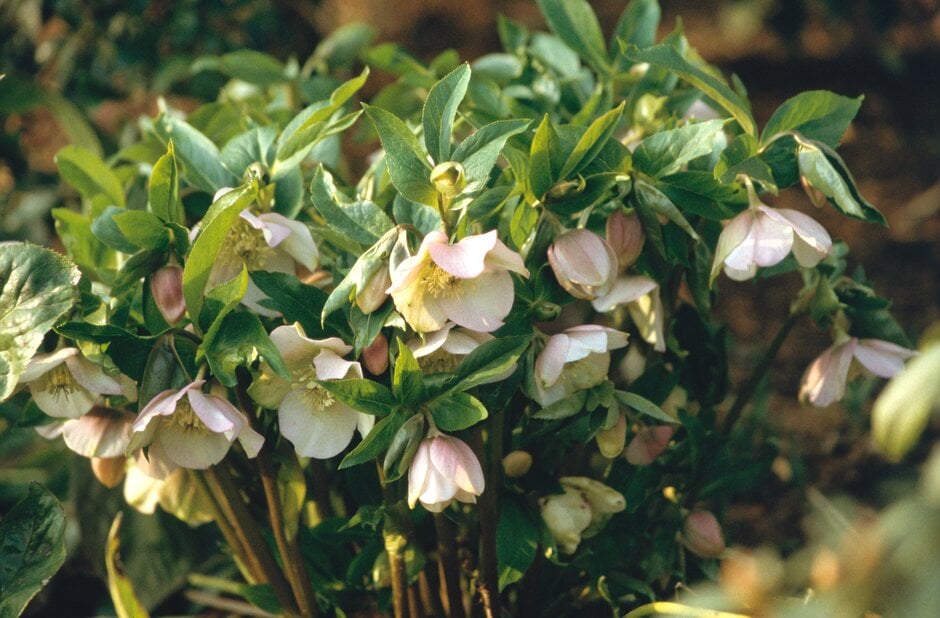Helleborus orientalis Lam.
Lenten rose
A clump-forming perennial to 45cm tall with leathery, dark green leaves divided into seven to nine, lance-shaped leaflets. Cup-shaped, nodding flowers in clusters of one to four are borne above the foliage on sturdy stems from late winter to early spring; colour is variable with shades of greenish-white to pink or purple and the flowers are often spotted

Buy this plant
Size
Ultimate height
0.1–0.5 metresTime to ultimate height
2–5 yearsUltimate spread
0.1–0.5 metresGrowing conditions
Moisture
Moist but well–drainedpH
Alkaline, NeutralColour & scent
| Stem | Flower | Foliage | Fruit | |
| Spring | White Pink Purple Green | Green | ||
|---|---|---|---|---|
| Summer | Green | |||
| Autumn | Green | |||
| Winter | White Pink Purple Green | Green |
Position
- Full sun
- Partial shade
Aspect
North–facing or West–facing or East–facing
Exposure
Exposed or Sheltered Hardiness
H6Botanical details
- Family
- Ranunculaceae
- Native to GB / Ireland
- No
- Foliage
- Evergreen
- Habit
- Clump forming
- Potentially harmful
- Harmful if eaten, skin irritant. Wear gloves and other protective equipment when handling. Pets: Harmful if eaten, skin irritant. For further information and contact numbers regarding pets, see the HTA guide to potentially harmful plants
- Genus
Helleborus can be rhizomatous, herbaceous or semi-evergreen perennials forming a clump of pedate basal leaves, or evergreen with erect, leafy stems. Large, bowl-shaped flowers are borne in loose clusters in late winter or spring
- Name status
Correct
How to grow
Cultivation
Grow in fertile, moisture-retentive, humus-rich but well-drained soil which is preferably neutral or alkaline, in a position with shelter from strong, cold winds and in full sun or light dappled shade. Mulch every autumn with leaf mould, chipped bark or other organic matter; for more advice, see hellebore cultivation
Propagation
Propagate by division of large clumps in early spring, watering well until they are established
Suggested planting locations and garden types
- Cottage and informal garden
- Patio and container plants
- Flower borders and beds
- Banks and slopes
- Underplanting of roses and shrubs
Pruning
Remove old leaves to help prevent hellebore leaf spot, and deadhead by removing old faded flower stems
Pests
May be susceptible to hellebore aphid, hellebore leaf miner and snails
Diseases
May be susceptible to hellebore black death, hellebore leaf spot, downy mildews, grey moulds (botrytis), smuts, and virus diseases
Love gardening
Sign up to receive regular gardening tips, inspiration, offers and more
View our Privacy Policy
Get involved
The Royal Horticultural Society is the UK’s leading gardening charity. We aim to enrich everyone’s life through plants, and make the UK a greener and more beautiful place.